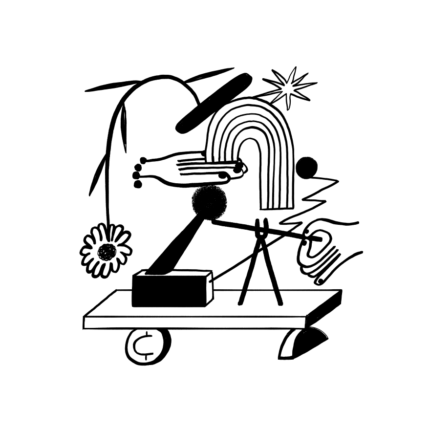Here’s what you need to know about your health savings account (HSA) in order to make the most of it… and lower your healthcare costs big time!
Few things crush a budget faster than the cost of healthcare. As more companies turn to high-deductible health insurance plans (HDHPs), workers are spending more on medical expenses.
If you have an HDHP, you may already know the sting of high medical bills. A quick trip to the doctor or a one-time prescription may cost more than you expect. That’s because your insurance doesn’t kick in until after you have met the deductible.
There is one silver lining to these health plans, though: they unlock your eligibility for a health savings account (HSA). In this article, we’ll cover what to know about these tax-saving machines—including how to make the most of yours.
The benefits of an HSA
When you’re spending hundreds or even thousands of dollars on out-of-pocket medical expenses, you may be eager for more ways to save money. One way to do that is by using an HSA, which can help you save on taxes in three different ways:
- Lower your tax bill with a deduction for contributions
- Invest your health savings account balance for tax-free growth
- Make tax-free withdrawals anytime for qualified medical expenses (including some over-the-counter medical products)
There’s no doubt about it—pairing an HDHP with an HSA is a savvy move. But it’s important to know the rules before you start making contributions.
Understanding eligibility
Before diving into HSA strategies, let’s tackle the question of eligibility. To qualify for a health savings account, you must meet four rules from the IRS:
- You have an HSA-eligible high-deductible health savings account.
- You don’t have other health insurance coverage, with a few exceptions.
- You are not actively receiving Medicare benefits.
- You aren’t a dependent on someone else’s tax return.
Not all HDHPs qualify for an HSA. Generally, a qualifying HDHP will be labeled either as a consumer-driven health plan (CDHP) or an HDHP with a savings option. Here’s a quick breakdown of the minimum deductibles and maximum out-of-pocket expenses (deductibles, co-payments, and other amounts) for 2020 and 2021:
| 2023 | Individual | Family |
| Minimum annual deductible | $1,500 | $3,000 |
| Maximum out-of-pocket expenses | $7,500 | $15,000 |
| 2024 | Individual | Family |
| Minimum annual deductible | $1,600 | $3,200 |
| Maximum out-of-pocket expenses | $8,50 | $16,100 |
Contributions Limits
There’s a limit to how much you can contribute to your health savings account every year. it.
| Individual | Family | |
| 2023 | $3,850 | $7,750 |
| 2024 | $4,150 | $8,300 |
If you started your HSA eligibility mid-year, then you are eligible to give the full contribution limit for that calendar year. However, if you lost your eligibility mid-year, you can only give a prorated contribution based on the month you lost coverage.
If you’re 55-64 years old (pre-Medicare) you can contribute an extra $1,000 annually.
Here are a couple of important contribution rules to know:
- Deadline: The deadline to contribute for the previous year is April 15th. For example, you may contribute to your HSA for 2020 until April 15, 2021.
- Penalty: If you contribute more than the annual limit, you will owe a 6% excise tax on the excess amount. But you can avoid the penalty by withdrawing the extra contribution—plus any earnings on that money—by the tax deadline.
Best use cases for your HSA
While it may be tempting to swipe your Starship Visa Debit every time you visit the doctor or the pharmacy, we think it’s worthwhile to consider all of your options.
Save for major healthcare expenses
Health savings accounts offer a couple of key advantages over your workplace flexible spending accounts. The first is the account’s portability. You may take your health savings account with you when you change jobs, while a flexible spending account stays with your former employer.
The second is your ability to roll over the full account balance from year to year. If you or a family member needs a less urgent procedure—like elective surgery, for example—you may decide to save for it for months or years with a health savings account. Flexible spending accounts have a more restrictive “use-it-or-lose-it” rule every year, with a couple of exceptions.
Cash in your receipts for emergencies
If you can afford to pay for your medical expenses upfront, you should consider holding on to your receipts. Here’s why: according to the IRS, there isn’t a deadline to reimburse yourself from your health savings account. As long as you have receipts for all eligible medical expenses, you can “cash them in” at any time—even years later. This may offer you an extra financial buffer for worst-case emergency scenarios.
Invest for healthcare in retirement
One of the most popular features of a health savings account is flexibility. You may decide to spend the money the year you make contributions or you may spend it in the future. If you can avoid tapping your health savings account now, you may invest the balance.
By maxing out your account every year, you may have a sizable balance by retirement age, which you are likely to need. According to a recent Fidelity report, the average couple spends $285,000 on healthcare in retirement—and that doesn’t include the cost of long-term care. The more money you have, the easier it may be.
While most people don’t invest their HSA balance, there are major advantages to doing so. But before you start investing, you should review your complete financial situation. If you can’t afford out-of-pocket medical expenses now, investing may not be the right move.
Be strategic
Whether you have an individual or family HSA, it will pay off to act strategically. Your HSA offers plenty of options—including three (big!) tax breaks—along with the ability to save for the long-term. What’s not to love?



